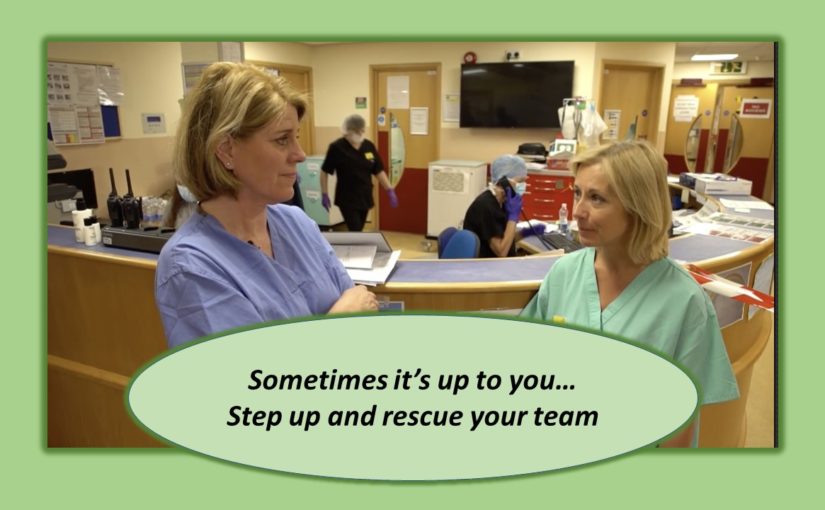By Thomas Davis, DNAP, MAE, CRNA
Follow @procrnatom on Twitter
There are many paths to leadership; some people want to be leaders and plan a career progression that positions them for the nod when it is time for a change. Others become leaders out of necessity when effective leadership is lacking and a team is suffering. For example, some years ago a group of 47 CRNAs serving a large hospital had a leader who was just putting in time until his scheduled retirement. Because he didn’t want to make waves, he kept a low profile and simply put the team on autopilot. The boss was disinterested with no goals, the team lacked direction and felt abandoned, morale was low, and recruiting was difficult. One team member stepped forward. Using a two-pronged approach, he simultaneously assumed responsibility as the lead recruiter for the group while working with colleagues to find ways to make the job more attractive for applicants. As a result, morale improved, open positions were filled, and the responsive team member was subsequently promoted to the position of Chief CRNA.
Leadership is important at all levels. The CEO of an organization takes charge of public relations, interacting with other leaders, and reassuring both the workers and the public that resources are being obtained and the staff is fully prepared to meet the challenge. The middle manager organizes logistics and brings together unit managers to ensure that staffing is adequate, training is completed, and sufficient supplies are in place. The frontline leader establishes the mood for the group, sets goals, provides reassurance, facilitates collaboration, communicates the latest updates and protects team members from harm. A crisis enables an effectual leader to stand out among peers but, unfortunately, while some leaders flourish, others falter. The ones who flourish will appreciate help that is offered by the team. But those who falter will need to be rescued for the sake of both the team members and the patients. Across the leadership spectrum there is ample opportunity for motivated workers to step up and share a slice of the leadership pie.
If leadership is lacking, it’s time for you to stand up and be a champion for your team
A workplace champion voluntarily takes an extraordinary interest in a cause, policy or project that will promote the success of the team. Often, the champion is considered by colleagues to be a go to person on the team; a person with knowledge, expertise and a willingness to help others in need of guidance. Champions are opinion leaders who are uniquely positioned to influence groupthink and steer the team in one direction or another. When there is a crisis and the designated boss is unable to provide effective leadership, it is often the team champion who fills the void. If all eyes turn to you when the chips are down, draw on these behaviors to help you to be a successful non-titled leader.
- Maintain ties with the boss. Your goal is to step up, help where needed, and ensure that your team safely weathers the challenge at hand. It should not be your intention to incite mutiny and create a mini crisis embedded in the larger crisis. As you see and do what needs to be done, keep your boss in the loop and do not challenge his/her authority. Rather, focus on what needs to be accomplished, engage your fellow team members to help, and know that others notice and appreciate your efforts.
- Connect with the chain of command. If your boss is in total absentia and you are picking up the pieces, make sure that your activity is known and was approved by the next person in the chain of command. Work often crosses department lines and supervisors must be in the loop as you initiate activities with your team.
- Be decisive. As the saying goes, a good plan today is better than the perfect plan tomorrow, so assess the situation and quickly come up with a viable solution. Openly communicate with your colleagues and bring them on board with the plan.
- Be resilient. Not everything that is tried will work out as thought out. Rather than throwing your hands in the air in frustration, take setbacks in stride, re-focus on what you are trying to accomplish and develop a new plan. If you are filling a leadership void, your team does not need yet a second person to go absent.
- Be consistent and available. A crisis, such as the one we are experiencing with COVID,upends workflow and interpersonal relationships leaving workers feeling hopeless. You may not be able to make the virus go away, but you can bring stability to the group through consistency. Maintain a visible presence and, where possible, establish and stick to a schedule. Have a positive attitude and do not allow yourself to make emotional responses when glitches arise.
- Use emotional intelligence. People are emotional creatures and often respond and make decisions, good or bad, based on emotions. Emotional intelligence involves becoming aware of your emotions as well as sensing the emotions of others, and then interacting in a manner that affirms the feelings of the other person. Saying, “I sense that you are uncomfortable with this plan,” affirms the person’s emotions and opens the door for discussion. Feeling understood has a calming effect whether you are interacting with a colleague, patient, or family member.
There’s no end to stories of team members stepping up to the leadership plate during a time of crisis: When the platoon leader is killed on the battlefield, a sergeant takes command; when the all-star quarterback injures a leg, the backup runs on the field and wins the game; when communication is lost with headquarters during 911, the paramedic takes charge and moves a group of patients to safety; when the ICU nurse steps up and takes charge because her boss is overwhelmed by the COVID crisis and is paralyzed with anxiety, lives are saved. The workplace is full of heroes who have stepped in to fill the void left by a leader gone AWOL, and you can join their ranks. Whether absence of leadership is caused by a crisis, a lack of skill, or loss of the leader’s personal motivation or any other reason, you can be the one to carry the flag if the leader flags.
Tom is a skilled anesthetist, published author and frequently requested speaker


